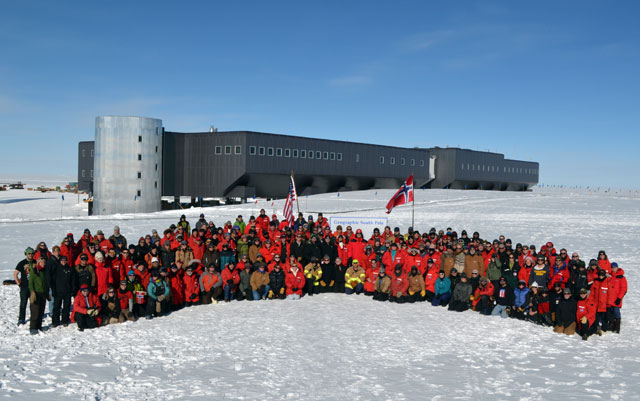|
Page 2/2 - Posted December 15, 2011
Amundsen tent site listed as important monument under Antarctic TreatyAmundsen knew the limitations of the astronomical observations, so he took repeated measurements and had members of his party walk around the area for miles to ensure at least one person had crossed the geographic pole. Another analysis of the Polheim location was made by British geographer Arthur Hinks and published in a 1944 paper in the journal of the Royal Geographical Society “One item of interest: Before Amundsen and Scott set out, Hinks figured out that there was some interest in Antarctic navigation and conducted a seminar in London attended by members of both expeditions,” said Spindler, whose interest in polar history has resulted in his extensive website, www.southpolestation.com “Another item of interest: Hinks didn’t think much of Alexander’s calculations. In fact, he didn’t even mention Alexander’s name,” he added. 
Photo Credit: Henry Bowers
Capt. Scott and his team at the South Pole after discovering they had been beaten by Amundsen to their prize.
Author Roland Huntford interpreted the Hinks data for his 1979 book Scott and Amundsen (later renamed The Last Place on Earth), considered the definitive story about the Race to the South Pole between Amundsen and Scott. He used a map that relied on Hinks’ calculations, but he never specifically mentioned the coordinates of the tent, Spindler said. More recently, in a paper published earlier this year in the journal Polar Record, Norwegian glaciologist Olav Orheim A construction engineer, Spindler has made his own calculations over the years. He has been in contact with Orheim and Hothem. During the most recent South Pole winter, he contacted winter-overs Marco Tortonese and Robert Schwarz, who used the data to make a pilgrimage to both the “Hinks” and “Alexander” tent locations. The first is about two kilometers from the South Pole, while the other is nearly three kilometers away. Complicating the search is not just the uncertainty surrounding the exact location of Polheim. The ice sheet itself moves, about 10 meters, or roughly 33 feet, per year. In addition, the ice is anisotropic, meaning it is stretching about 15 centimeters, or half a foot, per mile per year in the direction of the Weddell Sea. However, all of this academic work will forever remain theory, an interesting historical footnote. The tent, buried beneath at least 20 meters (more than 60 feet) of ice, will likely never be recovered. 
Photo Credit: Peter Rejcek
South Pole Station personnel, along with Norwegian Prime Minister Jens Stoltenberg (center), gather at the current geographic pole as part of the centennial celebrations this month.
In 2005, the Antarctic Treaty In addition, Polheim is in the station’s so-called Clean Air Sector, where a NOAA observatory Not that there haven’t been earlier attempts to recover the tent. In 1993, Norwegian glaciologist and polar explorer Monica Kristensen Solås led an attempt to recover the tent. But the expedition ended in tragedy when one of the team members fell to his death in a crevasse. At the time, Solås believed that ground-penetrating radar could be used to detect the tent, along with a sled that had been left behind by Amundsen. “I don’t think there’s enough metal to be able to turn up anything,” Spindler says. It seems the first artifact of South Pole history will remain an untouchable time capsule, entombed until that part of the ice sheet slides into the Weddell Sea in 140,000 years. |





